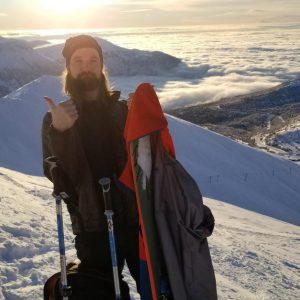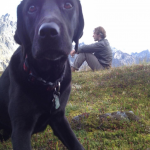Volunteer Spotlight

At his job as the director of the University of Alaska Anchorage’s BP Asset Integrity and Corrosion Lab, Matt Cullin imagines himself as a detective.
“I do a lot of failure analysis work for the oil and gas industry,” he says. “Basically when stuff breaks, we do the CSI forensics to figure out why things broke and why they failed.”
They get big projects and a lot of smaller failures too. “Every couple of months somebody shows up with an old piece of pipe and asks us to tell them what happened.”
His goal isn’t just to solve the crime, though, he wants to learn how to prevent corrosion. For all of these projects, Cullin says his next question is always “how can you keep it from failing in the first place?”
Volunteering for the Council
Cullin also puts his background in mechanical engineering with a specialty in corrosion, materials, and failure analysis into use for the Council as a member of the Terminal Operations and Environmental Monitoring, or TOEM, Committee. He says working with the committee helps him better understand the pipeline and terminal. The students in his classes at UAA benefit too.
“Students have a lot of questions about the pipeline and the terminal,” Cullin says. “These are engineers who might go to work for the state or Alyeska and for them to have that information before they graduate is pretty neat. It’s not a given, when you get a university degree, that you’ll get to study this applied information that’s relevant to your local installation.”
“It’s a cool symbiotic relationship,” he adds.
Cullin recently partnered with a fellow TOEM member, Tom Kuckertz, and staff member Austin Love to create a model to help the committee estimate how much oil could potentially leak through a secondary containment liner at the terminal, if that liner was damaged.
“Typically, when you’re talking about modeling, you want to understand the physics,” he explains.
Th
“I’m good at computer programming, so if you explain the model to me, and the equations that govern it, I can program almost anything. Once you have the equations, solving is the easy part.”
Cullin says you have to be willing to keep an open mind in this line of work. It requires a lot of “let’s figure this out” which he loves.
“Otherwise, it would be boring!”
Cullin says that taking things apart and figuring out how they work is the introductory spark for a lot of engineers. “You don’t have to have that to become an engineer, but it certainly helps to have that curiosity.”
“I really appreciate how it links everything together and you can describe the world in a mathematical form.”
‘Alaska gets its hooks in you’

ey figured out the physics that governed how the fluid would flow through the materials and then Cullin says it’s just a matter of programming.
Outside of work, Cullin has developed a passion for all things outdoors. He hikes, bikes, skis, packrafts, fishes, camps, and recently took up white water kayaking. He loves the variety of activities Alaska provides and just being outdoors.
“That’s what you’ve gotta do. I can’t just sit inside the house, especially during shoulder season. That doesn’t make me unique, though, just makes me like everybody else in Alaska.”
“When I was in Pennsylvania, I was not outdoorsy,” Cullin adds. “Alaska gets its hooks in you, you start doing this stuff, and then someone says ‘there’s a good job opportunity down in Arizona,’ and you’re like ‘yeah but they don’t have real mountains.’”
“The people that really embrace it, you’re not going to be able to leave.”